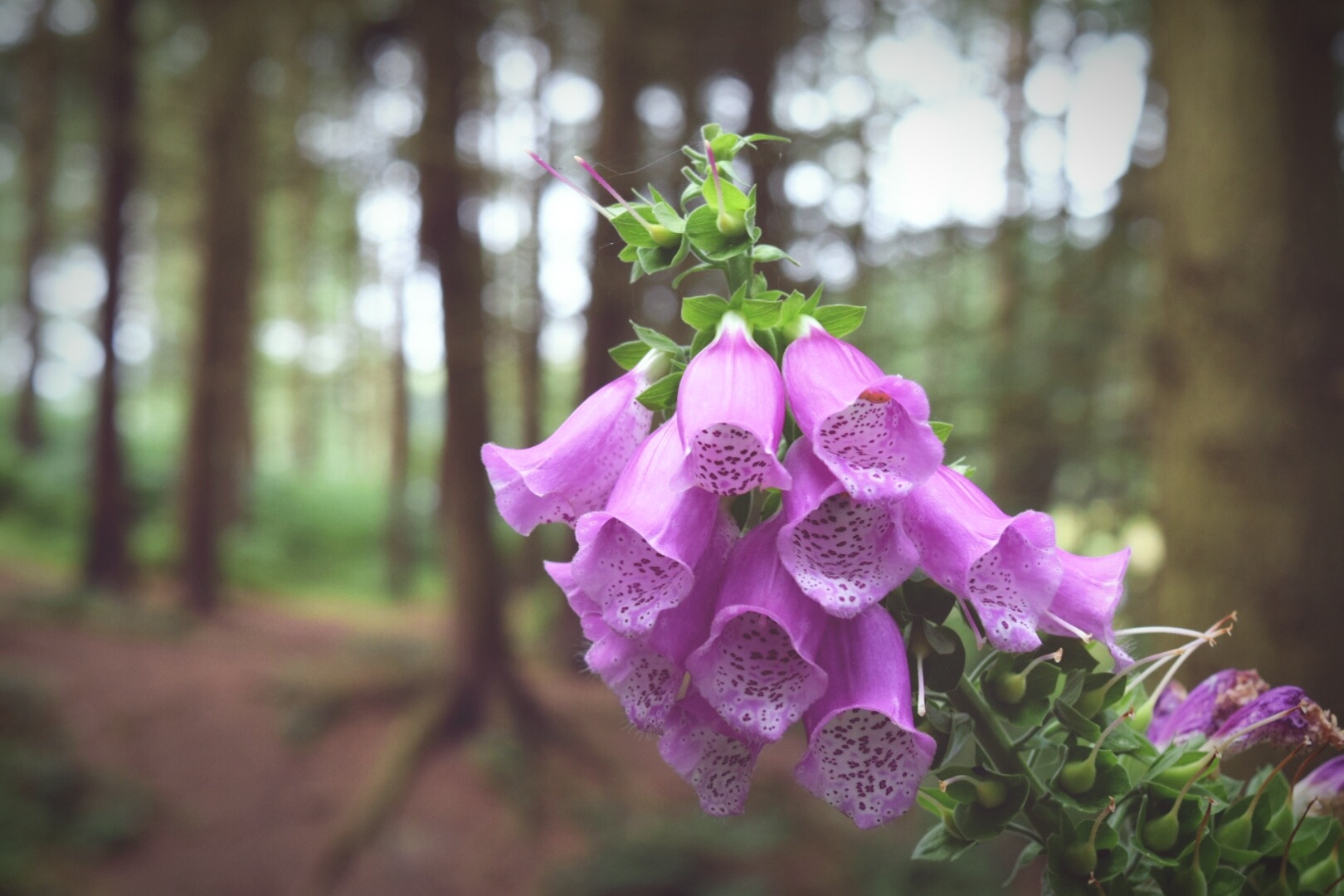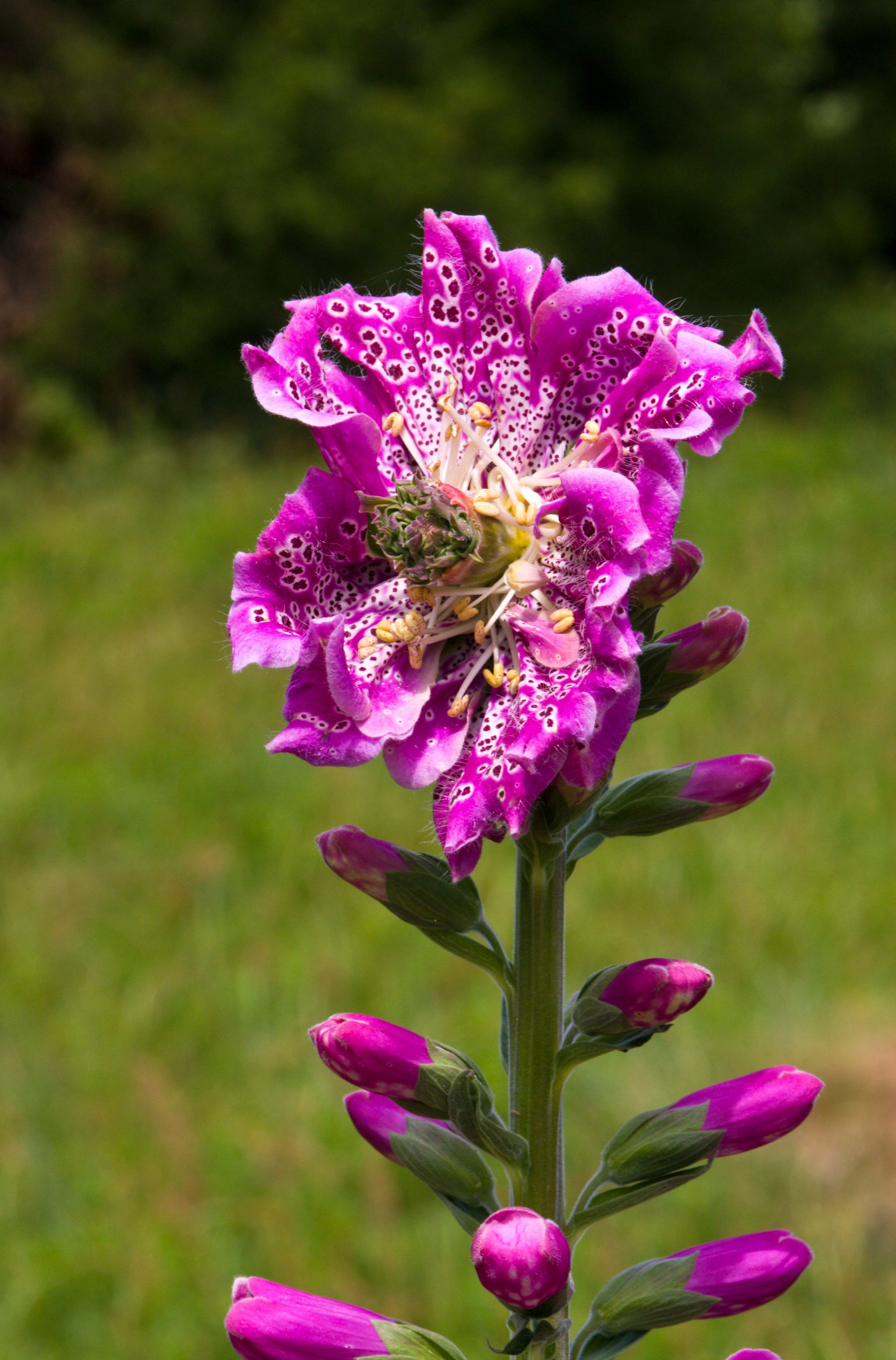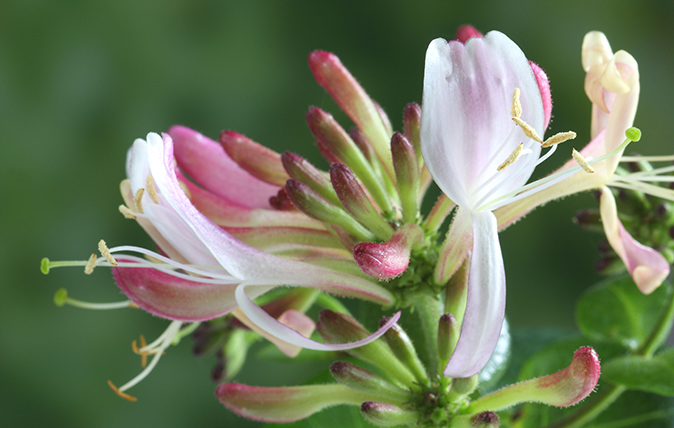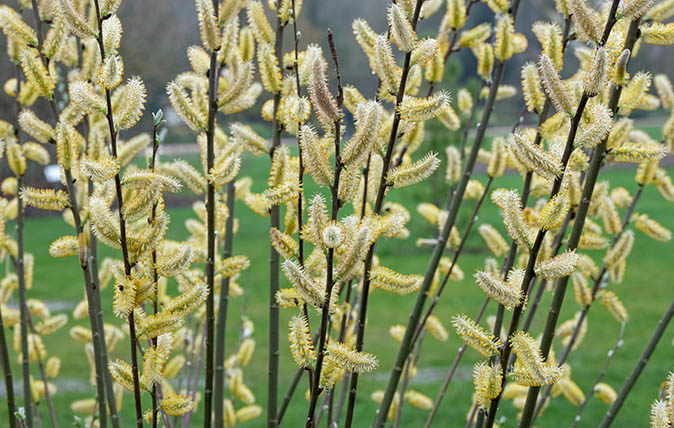Everything you need to know about Foxgloves: Beautiful, useful, poisonous — and a dream for bumblebees and plant-breeders alike
Charles Quest-Ritson celebrates one of the most striking flowers of this time of year, and offers his tips on how to make the most of them.


Foxgloves are wonderfully useful garden plants — hardy, prolific and beautiful. Smart journalists will tell you that ‘they give vertical interest’, but I love the way they make a perfect foil for floppy old-fashioned roses. Our native foxglove, Digitalis purpurea, is a plant of hedgerows and woodlands — and one of the very finest of the wildflowers of Britain.
My grandparents had a fine woodland garden and they encouraged white foxgloves to seed around. You can tell white ones long before they flower, because pink ones have a purplish tinge to the leaf-stalks. These were the plants we were detailed to pull out, so only the white ones went on to flower. Foxgloves are known to be poisonous, but I always washed my hands afterwards. Nanny saw to that.
People say that foxgloves are biennials, but it’s best to think of them as short-lived perennials. They flower for weeks in late spring and summer, but I find a few plants try their luck later in the year, too. These have sometimes been developed as ‘annual’ strains, yet if you cut back any foxglove before it has set seed, it will flower again later or perhaps next year. If you give it a ‘Chelsea chop’ in mid May — which means cutting out the flower spike before it has started flowering — the plant then produces up to half a dozen flowering spikes later in the season.
"Foxgloves are a plant-breeder’s dream, because they produce so much seed"
Foxglove flowers hang down (to keep out the rain) and appear on one side only of the stem — the sunny side. I love to watch the bumblebees bustle into the tubular flowers (which botanists call ‘corollas’), then wriggle their way back and leap onto the next flower up the stem. The plants like it, too, because the flowers are ready for fertilisation before they release their pollen, so the bees carry the pollen from the lower flowers to the receptive stigmas higher up. Apart from a few mules that are sterile, foxgloves seed so abundantly, you need never be without them.
Foxgloves are a plant-breeder’s dream, because they produce so much seed. There are bound to be interesting variations. All are worth growing, except perhaps the Excelsior hybrids, which produce flowers in thick profusion around the stems, destroying the natural grace of the species. Crosses between our native foxglove with a yellow species called Digitalis grandiflora from the Italian Alps gave rise to D. x mertonensis, the flowers of which are the colour of the inside of a strawberry and which carries the RHS’s Award of Garden Merit.

Bees are great aids to cross-pollination, too. My gardening mentor was John Phillips, a generous plantsman whose 33 acres at Roundway, near Devizes in Wiltshire, were the source of many good plants. On one visit, he showed me a clump of Digitalis lutea, a little yellow species from southern Europe, growing in the hardcore around one of his greenhouses. In the middle was a squinny seedling with flowers tinged in pink — clearly a hybrid with our native D. purpurea.
John thought little of it, but Terry Baker, an enterprising Wiltshire nurseryman, believed it was worth preserving and propagated it successfully. What should he call it? ‘Glory of Roundway,’ said John derisively, and that was the name with which it found its way into commerce.
Exquisite houses, the beauty of Nature, and how to get the most from your life, straight to your inbox.
But the story has two sequels. First, the RHS has now given its AGM to the seedling that John scorned. Second, Terry’s Botanic Nursery at Atworth went on to assemble an entire National Collection of Digitalis. He credits me with introducing a Spanish species called D. thapsi into cultivation in England — its only real merit is its tolerance of hot sun and summer drought.
"10 years hence, we will be growing 8ft shrubby foxgloves with dozens of flower spikes"
There’s a strain of our common purple foxglove that tends to peloric flowers. ‘Peloric’ indicates that the tip of the flowering spike bears a large, upward-facing terminal bloom. It’s a mutation that always excites comment and, in Mendelian language, a simple recessive, which means pure seed strains should produce peloric flowers, but they don’t always, because environmental factors play a part in deciding whether the pelorism is expressed. I’ve seen the phenomenon in D. lutea and snapdragons, too. Someone should try to stabilise it.
There are at least 20 species of foxglove. I predict the number of seed strains and named hybrids will explode in the years ahead, especially now that the orange-flowered shrub we used to call Isoplexis canariensis is included in the genus Digitalis. Its first hybrid with D. purpurea, called Illumination, was launched with a fanfare in 2012, but turned out less hardy than expected.
Work continues: 10 years hence, we will be growing 8ft shrubby foxgloves with dozens of flower spikes in a range of pink, apricot and peach hues. Wow, you may think… but don’t all foxgloves already have the wow factor?

The best honeysuckle to grow in your garden – especially if they’re gifts from now-departed friends
Charles Quest-Ritson extols the virtues of delightful honeysuckle.

What to plant if you're thinking of putting a willow in your garden
Charles Quest-Ritson offers advice on this incredibly vibrant plant.

Credit: Alamy
A moorland splashed with heather makes our hearts leap — so why don't we grow it any more?
Charles Quest-Ritson looks at how heather has gone out of fashion — and wonders what we can do about it.

Credit: Alamy
The daftest plant name in English, and how it belongs to a wonderful flower just starting to show its potential
There are a lot of silly names for flowers our there – and Charles Quest-Ritson has a chilling warning for those

Rage against the buttercups: How to wage war on the weeds in your garden
Charles Quest-Ritson loves plants — but in his garden, he only wants the ones he chooses.
Charles Quest-Ritson is a historian and writer about plants and gardens. His books include The English Garden: A Social History; Gardens of Europe; and Ninfa: The Most Romantic Garden in the World. He is a great enthusiast for roses — he wrote the RHS Encyclopedia of Roses jointly with his wife Brigid and spent five years writing his definitive Climbing Roses of the World (descriptions of 1,6oo varieties!). Food is another passion: he was the first Englishman to qualify as an olive oil taster in accordance with EU norms. He has lectured in five languages and in all six continents except Antarctica, where he missed his chance when his son-in-law was Governor of the Falkland Islands.
